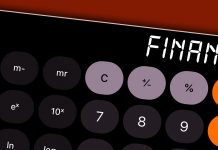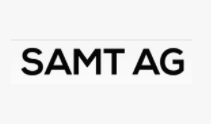What is an ETF?
A fund is a collection of share from different corporations. Funds can either be passive or actively managed. A passive fund follows an index. An index is simply a collection of corporations which are bundled together according to some common characteristics. Such as total value, sector etc..
What is a share?
The world economy is an open market where corporations offer services to individuals to other companies and Governments.
These corporations own capital (money), human resources, and assets (such as buildings and machinery) they use these to create products or services and then sell them to others at a profit or a loss.
Corporations are owned by their shareholders. A share gives a claim of ownership on an individual corporation. This ownership entitles the shareholder to any profits a corporation makes. The stock market is a platform where these stocks can be bought and sold.
Buying individual stocks requires research and knowledge. Index funds allow individuals to buy a group of stocks representing the ownership of a number of corporations in one go.
What are index ETFs?
An ETF is an electronically traded fund. The electronically traded fund, means that it is listed in the stock market with its own ticker symbol. An ETF is, in fact, a tokenized mutual fund. Index ETFs hold a basket of stocks in one single ticker symbol.
What are the advantages of investing in index ETFs?
- Easier to diversify
- Less time needed for research
- Lower Fees than Mutual Funds and Hedge Funds
- ETFs offer transparency in what they are investing.
- Tax Efficient – the internal rebalancing within an ETF is not a taxable event to the ETF holder
- Easy Exposure to a specific group of corporations in a particular industry
- No Research needed to find the top corps in a particular industry
- Easy to dollar cost average into a sector
- Easier to rebalance an ETF portfolio, rather than one holding individual stocks
- Dividends from shares held in the ETF are reinvested in the ETF creating compound interest
Things to be aware of:
- Not all listed companies are part of an ETF
- Leveraged ETFs work both when the market is going up or down this can magnify both returns and losses.
- Inverse ETFs are inversely correlated to an index.
- Fees, ETFs have very different fees. Management, Annual and trading. Research them before investing.
- Spread. This is the difference between the buy and the selling price. If there is a spread of $1, then the moment you buy you are already at a $1 loss.
- Some ETFs have low liquidity, large moves into the fund might fluctuate the price and selling large amounts cannot be done instantly.
ETF Examples:
| Fund | Ticker | Annual Fees |
| Vanguard Total Stock Market ETF | VTI | 0.04% |
| Vanguard S&P Mid-Cap 400 ETF | IVOO | 0.08% |
| Vanguard FTSE Developed Markets ETF | VEA | 0.07% |
| Vanguard FTSE Emerging Markets ETF | VWO | 0.14% |
| Vanguard Short-Term Corporate Bond ETF | VCSH | 0.07% |
Rebalancing your ETF portfolio?
The rule of thumb is to rebalance an ETF portfolio according to one’s age. Splitting that between risk and non-risk ETFs. Non-risky ETFs, are loans rather than equity. Debt has a higher claim than equity if a company goes under. The actual balance depends a lot on your particular financial situation; such as other passive income, social security, retirement age, estimated medical expenses and lifestyle
The traditional advice is to have between 80% and 60% in stocks/equities and the rest in bonds.
Conclusion
Few people have the luxury of becoming rich and financially independent from just saving. It will take you 83 years to save a $1,000,000 if you save $1,000 a month. ETFs, offer you a chance to participate in the economy. A share in the VTI gives you a share in the productivity of all the workers, CEOs, researchers and the robots powering an economy.











